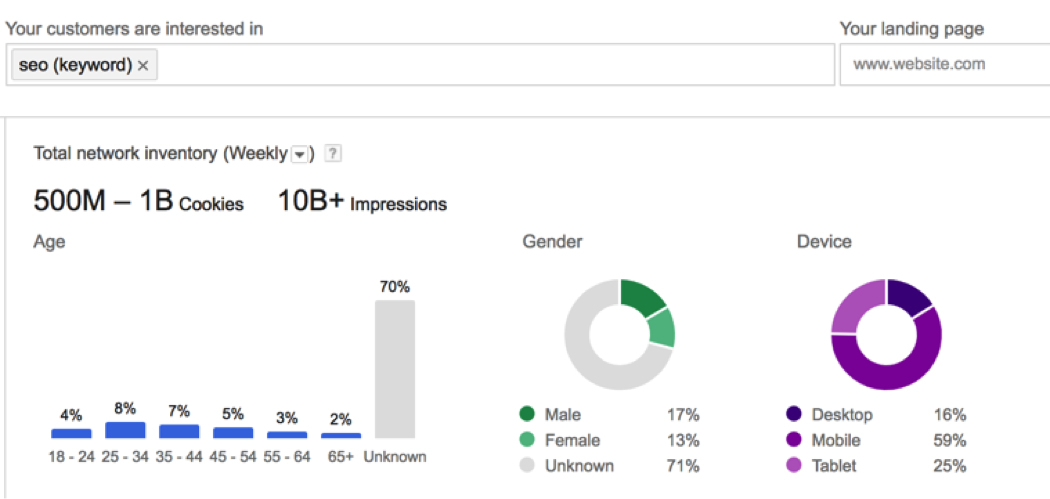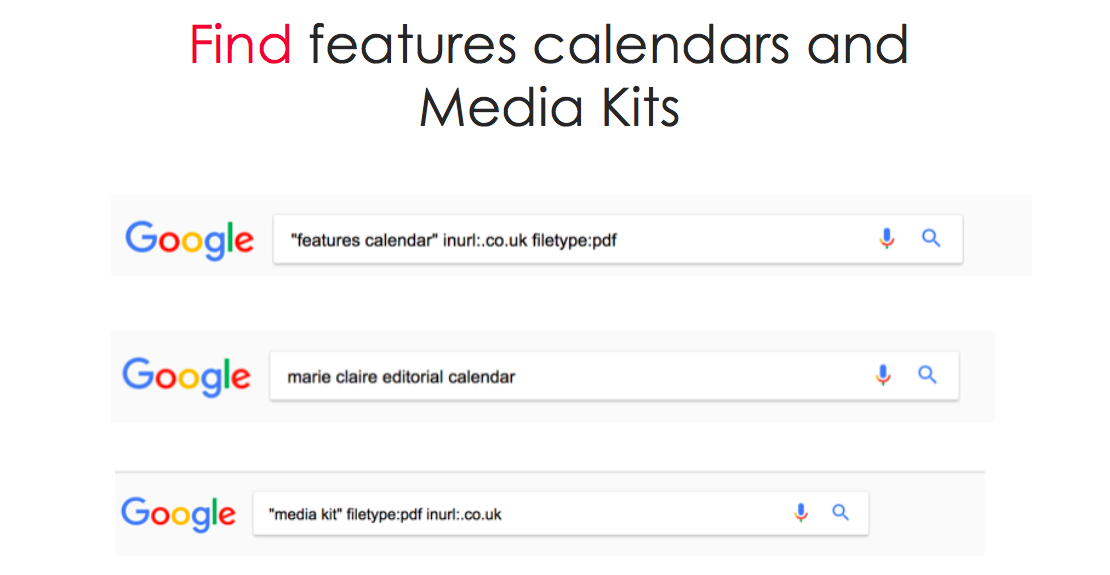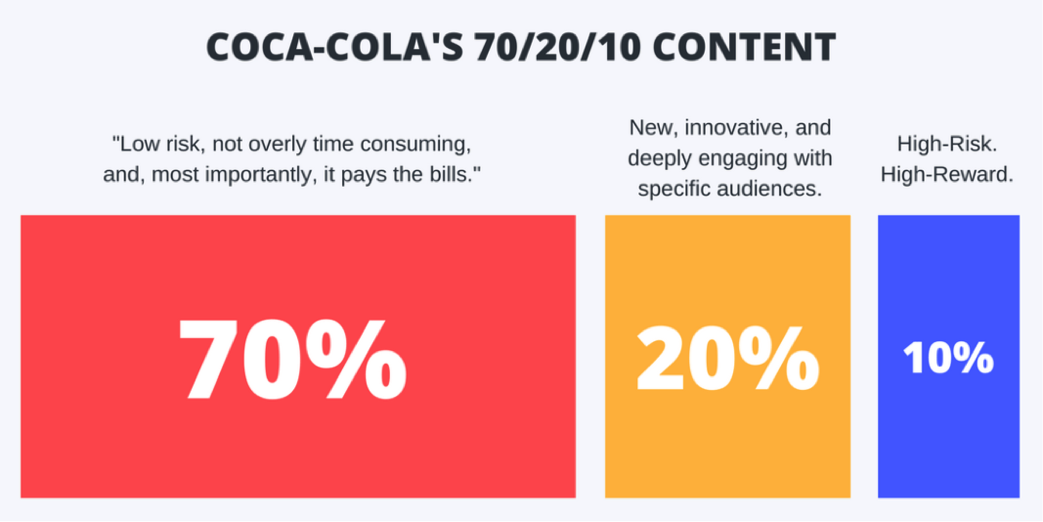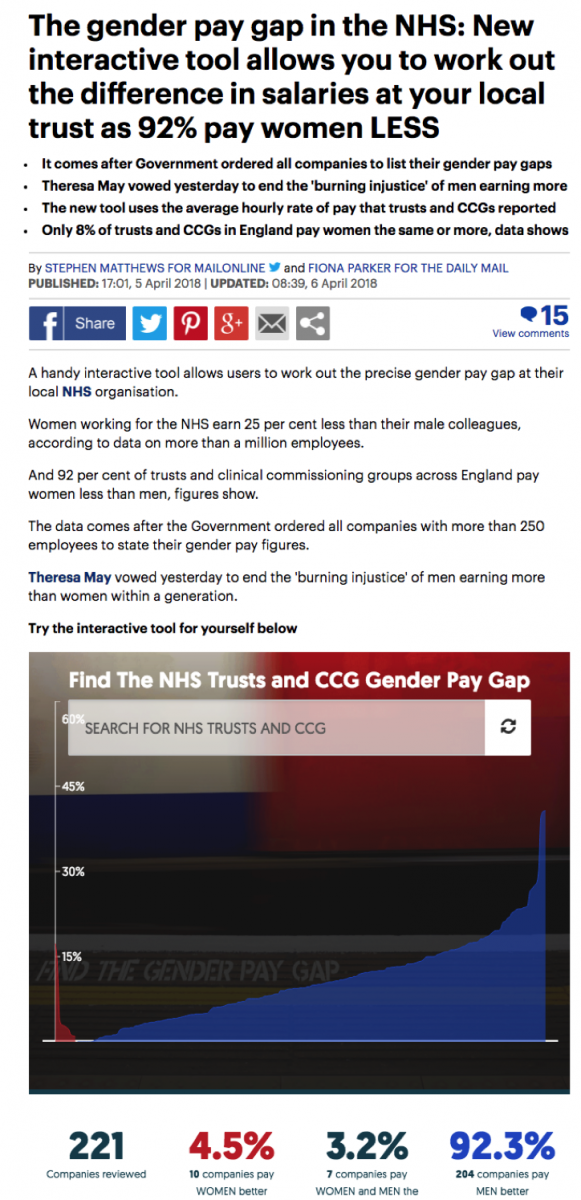Scalable link building strategy: How to generate 1056 links from the biggest sites in the world
Link building is hard, really hard. Developing and following a link building strategy is even harder. And in our humble opinion, link building is one of the core factors that can help move the needle on any SEO campaign.
That’s why we have put thousands of hours into developing a defensible, long-term, white hat link building strategy that has a low flop risk and zero algorithmic risk.
Flop Risk — The risk of getting no links for your efforts.
Algorithmic Risk — The risk of Google ignoring your links or taking punitive measures against them.
Spoiler Alert:
We do not buy links. We are not exchanging products for linked reviews, spending thousands on creative execution, or making deals with link Brokers on Warrior Forum or Facebook Groups. We also don’t shy away from difficult industries like gambling and forex.
Our approach to link building includes a mixture of:
- Data journalism (Getting a couple of data points together that uncover an interesting story)
- Digital PR (With the goal of syndication through news networks)
- Reclamation (The practice of reaching out to people who mentioned your brand and getting them to add a link)
The foundation of this approach is the news cycle. So if you don’t have any newsworthy content, you need to start manufacturing it and make sure it’s in tune with the publishing cycle.
UNDERSTANDING THE PUBLICATION PLAYGROUND
News is a system… and it’s broken. These days, many publications exhibit bad behaviour and it’s mainly due to bad incentives.
The main reason for this is that monetary value is being calculated via CPM ad impressions on digital banners, therefore, the most important factor is not the quality of the article, but the number of clicks. Because of this, most journalists at national magazines are expected to knock out 8-10 pieces per day.
Looking at the macroeconomics of a newspaper we see a squeezed revenue base which needs more and more output to survive due to the increasing noise to signal ratio of online news.
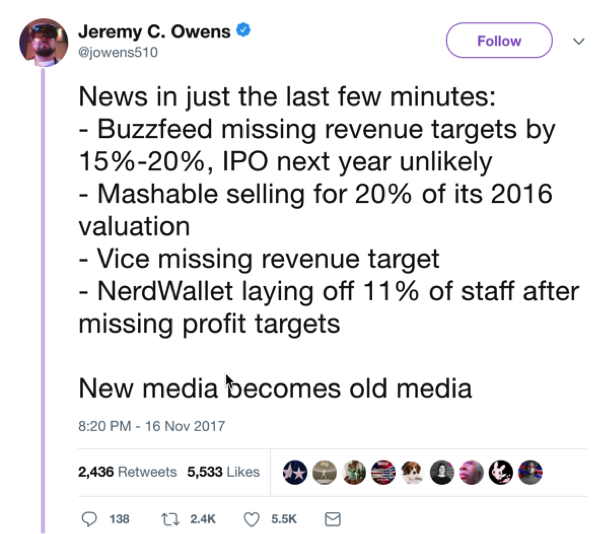
This in turn requires more content to be created faster and cheaper. Looking at the scope triangle, if you want it fast and cheap, you are going to have to sacrifice quality, the ‘good’. We’re now in a place where chronically overworked and underpaid journalists are blasting out literally thousands of articles a year so that publications can make £4 CPM off of their work.
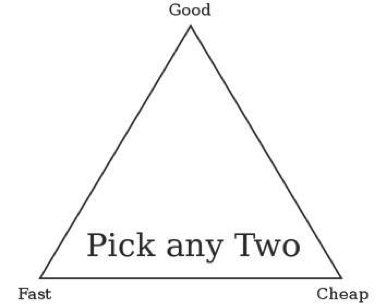
This means the journalism industry has a supply problem. And as SEO’s that are hungry for links, we’re more than happy to help out.
4 Core Principles of the News Industry
As SEO’s, if we are able to understand the environment a journalist works in, we are able to reverse engineer what they want to see and get our stories published.
Understanding these four core limitations of the news industry lets us craft the stories that do get pickup:
- High editorial standards.
Despite having to publish at a high volume, the editorial quality in a big magazine will always be high due to the fact that hundreds of thousands of people will be reading the piece. - High journalistic integrity.
All published stories need to be backed up by real, easily verifiable data coming from legitimate sources. If you pitch a story with lots of abstract information, you’re going to find it VERY hard to get pickup as journalists won’t be eager to verify it all on their tight timeline. It’s important to remember that newspapers have to keep their integrity high as it directly affects their readership and the gravitas of their stories. - Click Targets.
Especially in commercially minded publications like magazines and tabloids, hitting an impression target is heavily pushed. Therefore, headlines that get clicks are very much favoured and we need to keep this in mind for the pitch. - Time Poor.
If you need to write 8 articles a day you need to produce an article every 40 minutes, including sourcing images. That’s slightly mental.
CRAFTING A STORY: IDEATION, CREATION, AND PROMOTION
Coming from a big box agency background, I’m tempted to channel our old creative director, sit on a bean bag, come up with some ideas about unicorns, and proclaim my creative genius. However, at Type A Media, we don’t like things that are not structured, repeatable, and defensible, so investing our SEO campaign into a subjective opinion of one human being with an ego that makes Kanye look like a monk, doesn’t wash.
Content Ideation
In order to get your article published, you need to come up with a genuinely good idea.
At Type A media we start content ideation by making assumptive statements about the person we are targeting based on the data we have pulled.
Understanding the Audience with Facebook Audience Insights
The first thing we need to do before we start coming up with content ideas is to understand who the audience is: Who is going to read our story and what do they care about?
Doing this is insanely easy when using Facebook Audience Insights.
There are lots of ways to get meaningful data, including using your customer email list as a custom audience and using your own Facebook page data. However, after a decade as an agency side SEO consultant, I know that getting access to corporate Facebook accounts and liaising with social media managers is like pulling teeth, so we prefer to rely on 3rd party data for the first campaigns to build trust with the client and the other agencies running social, and then go through the arduous process of getting first party data for the second campaign.
In our opinion, when it comes to any results driven SEO practice, speed is incredibly important. The journalists will be slow and the client’s ability to get things done will be slowed down by the machine/system they are working in…however, their c-suite’s expectations around results are NOT slow, therefore, you need to be pumped, primed, and lightening fast in order to balance out all the competing forces.
Top Level Keyword and GDN
Now, in usual circumstances, if someone at Type A Media mentions display, it’s the punchline to a joke.
ME: Want to hear a joke?
PROGRAMMATIC DISPLAY: Sure
ME: Using post impression actions as a reporting metric in 2018.
PROGRAMMATIC DISPLAY: I don’t get it
ME: Yes, I know you don’t get it!
But in this instance, we use it as a thought starter to get the basic demographics around our target keywords.
We then plug this basic demographic information into the Facebook Audience Insights tool.
If you’re into actionable tips and not very fond of hand-holding, here’s a great post by Christina Newberry, where she shares a detailed overview of the Facebook Audience Insights features and capabilities.
Turning the insights into data points
Ultimately, I want to refine the audience down and pick out an interesting data point that I can turn into a story.
For that, we use our ideation framework, which is based on three major pillars: Identity, Entertainment, Utility.
When we explain our approach to new members of our team, we show a video of the head of Buzzfeed motion pictures and “captain sports racer”, Ze Frank.
In the video he breaks down the impetus for sharing (and in our case linking to) content.
Before creating a piece, we will write out 3 columns on a whiteboard:
- Identity (This content explains who I am better than I can)
- Emotional Gift (I thought this was funny and want you to find it funny)
- Utility (This makes my life easier or solves a problem I have)
For example, from a recent session for a client in the housewares industry, we came up with this:
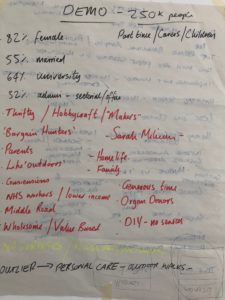 |
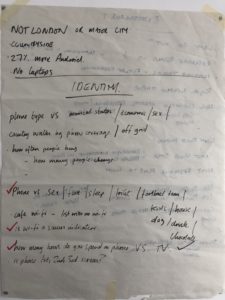 |
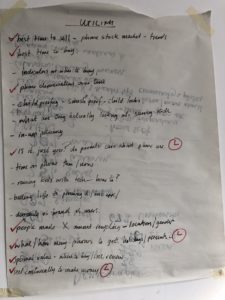 |
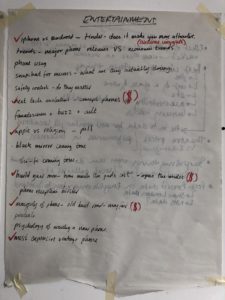 |
Once I have a refined audience, we then go into the content ideation — this is best done with a team of people and ideally someone from the client team to let you know what’s brand safe and what is not brand safe.
Make sure the story will match the journalist’s needs
Now, in order to craft the correct story that is going to get pickup, we need to know what is happening in the news cycle.
To accomplish this we use a couple of techniques.
- Know their editorial calendar
Forward features are usually published a couple of months in advance and they contain the major stories that a publication is going to be writing about over the coming months. There are several ways to get the forward features list.
The first way is cheap — just go to Google for it. Stacey MacNaught in her deck about link acquisition without big content budgets advises to look for editorial calendars and media kits by using search operators.
The second way is pricey, but way easier — it involves using a media database like Cision Gorkana.
If your budgets are a little tighter, we recommend sticking with the first one or contacting your target titles and asking them for a list of the features they are planning to run.
- Reach out in advance
In general, contacting the journalist that you want to pitch ahead of time is a very good idea as you can get clarity on the types of things they are interested in at a certain point in time. Due to the fragmented nature of the journalism industry, a very high percentage of writers are freelancers and they are likely to write for more than one title.
- Make an editorial calendar of your own
When building an editorial calendar we look at industry events and commercial holidays as well as cultural events. We then layer the forward features on top of that so we know what our target titles care about. Now we have a map of the right content to be published at the right time, by the right people.
Content creation
There are many of schools of thought when it comes to content creation.
There are people like Hannah Smith who highlight that the subjective quality of the creative doesn’t actually matter — the story and the resonance of the message do. A classic example of this is in her BrightonSEO Slide deck from 2015 where she shows us the beer infographic that looks like it was created by crossing a Fiverr gig with clip art. However, this piece got featured in 150 top tier publications across the world… and even the Economist.
There are other schools of thought that say that investing more in quality content over time is the best way to go. This excellent talk by Lisa Myers highlights that investing in useful, beautiful content is the only way to go.
So what should you do?
Invest heavily in a single piece and go all in on it or chop it up into smaller pieces and have multiple bites of the cherry. In our experience, both work and should be applied to different scenarios.
If you are an SEO agency/consultant with a budget of £5k or less in the UK, then option one is the only thing you are realistically going to be able to do. If you have larger budgets, we recommend using the 70/20/10 approach popularised by Coca Cola, the kings of content marketing.
In brief, that approach is about combining the three types of content in the following proportions:
Image source: https://buffer.com/library/social-media-manager-checklist/
Don’t believe me? They sell fizzy, flavoured sugar water with the strapline, “Taste the feeling.” Well, I taste the feeling alright and it tastes like diabetes.
Flop risk vs algorithmic risk
Flop risk is a metric we use to calculate the potential of the content to get picked up in the press and be linked to.
We need to balance the flop risk of the content not being picked up against the algorithmic risk of aiming too low and getting success. If that doesn’t make sense, this Les Brown quote sums it up perfectly:
“The problem is not that you aim to high and miss, it’s that you aim too low and hit.”
Therefore, you need to take into consideration the clients budget, brand positioning, in-house capability, and ultimately their goals. If they are a startup that needs to 10x their traffic, I’d have some very serious conversations about running 12 “moonshot” campaigns in the year with the express strategy of 2 or 3 working extremely well and the rest completely flopping.
For a standard brand looking for incremental growth, I’d pick a mix of repeatable and predictable activity with and run some innovative campaigns as you build trust and show initial results.
Decreasing the flop risk
One way to decrease flop risk, independent of spending less money, is to make sure the content you are creating has multiple angles. One way to do that is to make sure your initial data journalism research lends itself well to multiple stories. For example, for a Gender Pay Gap piece we were creating for a client, we knew that the right wing press would publish a particular narrative and the left wing press would publish another, therefore, we crafted angles from the same database that both sides could use to satisfy their audience.
On top of political leanings, we knew we could compare different industries like sports, law, medicine, retail, etc — thus opening up a large raft of trade press and niche sites that we could also contact.
We could also cut the data by location and do a showdown between competing cities.
Dirty little agency secrets
The dirty little secret of that 70/20/10 content diagram is that as an SEO consultant working for a brand, you don’t ever get to do the 10% content unless under some very rare circumstances. Every agency operator knows that the 10% ideas for content are put in the pitch deck to get people excited and inspired and ultimately help sell the “less mental” idea that you want the client to pick up. It’s the same tactic used in pricing popcorn at the cinema and wine in the supermarket.
Once you have decided on the route you are going to take with the content production — go make it. And then, get ready for the next part — getting your piece picked up and published.
Content promotion
Once you’ve got you content ready, you need to make up a list of the journalists you want to contact, develop your pitch, and decide on the angles to sell the story.
To build our prime outreach list we use some pretty common techniques:
- Find people who have written about your topic before
- Search twitter for the journalists that are tweeting about your topic
- Look the right people up on a paid media database like Gorkana
Making the outreach list
Just getting a list of journalists that have written closely around the topic you are covering is not enough. You need to go into the article, click on their name, and look at all of the articles they have written to try and understand their “beat”, i.e. the topics they cover.
The reason why you should do this is because it refines the list down to the correct people and gives you more of an “in” with them which makes it much more likely for your story to get picked up. Do not make the mistake of blanket emailing hundreds of people. You will get blocked and you will not get a link.
How long does it take?
At Type A Media we are very heavy on data and analysis, so we’ve measured the time it takes to get together a list of 20 journalists ready for the reach out. We’ve estimated the time to assess one name, find out about what they are writing about, decide if they are a good fit or not and then get their contact information.
Here are the numbers:
- It takes around 6 minutes to assess a journalist
- About 30% are suitable for a campaign
- We can assess 10 people per hour
- 3 are suitable (on average)
- Therefore, it takes just under 7 hours to get a good list of 20 people
The way to decrease this number is to invest in tools like Pitchbox which acts as a CRM and outreach platform.
We have now perfected the process of outreach and we have been able to get much higher numbers than your average person reaching out, but that takes time and persistence. And here are our Pitchbox numbers to prove it:
Getting Links
The job doesn’t end with getting your content published. You’ve come for the links, and the more the better considering the quality of the websites that link to yours is not questioned. There are two major steps that allow you to a) drastically increase the number of links and b) make sure they’re all in place. It’s syndication and reclamation.
Syndication
Simply put, syndication is the system of sharing content across multiple website under the same license. As a general rule, local newspaper groups syndicate content throughout all of their sites on their CMS throughout multiple locations. This is at least true for the UK, Australia, and Parts of the US. I can’t speak for the rest of the world as we don’t do a high number of non-english language campaigns.
The easiest way to see what publications get syndicated is just to do a manual check. We do this the same way we find journalists, except this time we are going to pull the physical titles of the most shared articles.
We wrap them in quotation marks and then put them into a scraper, so we can see how many versions are syndicated out. We can then rank each of the publications according to the ones that get picked up the most.
General Rules
The easiest way to find a list of the holding companies that own multiple titles is to go onto Wikipedia and start searching around. You will usually find a link from a page about a major publication back to the holding company which has the list of all of the publications.
There are also large content aggregators that sell content licenses to big sites.
The most popular in the UK are :
- Associated Press
- J Press
But if you want to find the biggest content licenses in your area a simple Google search with an advanced operator for terms like “license this content” should bring up a couple of gems.
Send the emails
When you get the list of contacts to outreach to about the link, make sure you remember the basics of the process:
- Perfect spelling and grammar
- Brevity is your friend
- Paste a press release in the body of the email
- Link to a press pack hosted online with any assets you have
- Don’t use open rate or link tracking or anything like that as it increases the chances of spam filtering
- Don’t use manipulative tactics
E.g. never put Re: or the person’s name in the email subject. People working in big media are professional journalists that get pitched hundreds of times a week — this is not your mum signing up for a Groupon deal. They know all the manipulative tactics in the world, and by trying to cheat, you are likely to build resentment rather than a real relationship.
When we are sending the first email we are not bothered about getting a link immediately, we just want the brand name to get coverage so we can go back and “reclaim” the link later.
It’s much easier to ask a journalist to update their article with a link when it’s already live as you have some leverage. Trying to negotiate this ahead of time is likely to end badly with excuses like “my editor says no” or “that’s not possible in our CMS.”
Reclamation
For the uninitiated, reclamation is the process of finding brand mentions without links and reaching out to get a link added. This blog post so far has walked us through how to get decent content out there that gets picked up by top tier sites.
Now we need to cover the process for reaching out to get links added to our syndicated content.
For that we will need:
- mention.net to pull in all of the brand mentions
- URL Profiler to find the linked/unlinked mentions
- Pitchbox to do all of the outreach legwork with finding emails, follow ups, etc.
When sending the emails, we recommend you set up Pitchbox to follow up every 7 days. The outreach sequence in Pitchbox pauses the moment that there is a reply so you don’t have to worrying about sending out any unnecessary emails.
Keep the emails short and to the point. Just simply ask for the link to be added to the article — don’t fluff them about their amazing journalistic career.
And lastly, have a bit of a grit. It’s unlikely you get a positive response first time around: it’s always on the follow ups that the links get added.
CONCLUSION
The approach that I’ve described certainly takes time and effort, but it’s worth the effort when you are able to report to your client that you are winning links from the biggest sites in the world.
In Summary
When aiming for PR links, you need to reverse engineer what the journalist wants by validating your idea with social proof and making your data easily verifiable.
Making the list of the journalists to pitch your story should not be automated but to hit scale you should automate follow ups, and be smart with your CRM, otherwise you risk getting lost in your email box.
Getting your content published does not mean getting the link. Reclaim your links with the same approach as you would have used to have a story published, but have a bit of a grit. Rome wasn’t built in a day. On average it takes 2 months turnaround time from initial idea to a published story.
If you have any questions about the above process feel free to email me ross@a.agency or tweet me @rtavs.

